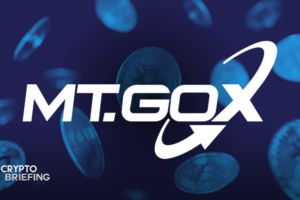
Key Takeaways
Lido is a popular liquid staking solution for Ethereum and other blockchains.
Lido accounts for the vast majority of liquid staking derivatives in the Ethereum ecosystem. As it’s seen parabolic growth, there are growing concerns that it could impact Ethereum’s decentralization.
While the concerns are warranted, Ethereum staking should become more decentralized as the network grows and more solutions like Lido enter the market.
Share this article
Lido is a liquid staking solution that supports Ethereum and other blockchains. The protocol has seen parabolic growth and dominates the liquid staking market with a large amount of staked ETH. But some onlookers have concerns that Lido’s success could impact Ethereum’s decentralization.
What Does Lido Do?
Lido is crypto’s top liquid staking protocol.
Launched in December 2020, the protocol supports several of the ecosystem’s top Layer 1 networks, but it’s best known for its Ethereum staking offering. Lido has created an easy way for Ethereum users to stake their ETH to earn a variable APR of around 4%. When staking ETH through Lido, users receive an equal amount of an auto-compounding token called stETH in return. stETH can be used in DeFi protocols or to provide liquidity on automated market makers while generating staking yield. Lido’s main value proposition is that it lets those who want to stake their ETH keep it liquid by receiving stETH tokens in return for staking.
Staking pools like Lido offer an alternative for users who do not want to set up their own validator node. Those who want to run a node must lock up a minimum of 32 ETH, the equivalent of over $90,000 at today’s prices. Additionally, running a node requires some technical understanding of the Ethereum blockchain, hardware capable of running a node, and a reliable Internet connection. It also exposes stakers to the risk of slashing if their validator goes offline, potentially costing them a portion of their staked ETH.
When staking through Lido, users are protected from slashing. The protocol charges a 10% fee on staked ETH rewards and allocates a portion of it to an insurance fund for such cases. Because Lido issues stETH, which is compatible with other DeFi protocols, there’s a monetary incentive for staking ETH with Lido instead of running a validator. stETH can be paired with other tokens to provide liquidity and earn swap fees or be used as collateral on lending and borrowing protocols such as Aave. That means users can earn a 4% staking yield, put stETH to work elsewhere in DeFi, and earn additional yield.
Lido’s Monopoly
Lido was one of the first liquid staking solutions to launch after the Ethereum Beacon Chain went live, and it has gone on to dominate the market. Data compiled by Delphi Digital shows Lido’s percent of Ethereum staking deposits has grown exponentially compared to its competitors.
Liquid staking distribution on Ethereum (Source: Delphi Digital)
According to data from Dune Analytics, Lido currently accounts for over 90% of all liquid staking derivatives in circulation. While other liquid staking options such as Rocket Pool and StakeWise exist, they have failed to put a meaningful dent in Lido’s market share.
Outside of the liquid staking arena, Etherscan data shows that Lido accounts for 29.4% of all ETH deposited to the Beacon Chain, more than triple that of crypto exchange Kraken, the next single biggest depositor at 8.66%. The Beacon Chain currently contains roughly 12 million ETH, with about 3.5 million coming from Lido.
However, in terms of validators, the protocol controls only 8.23% of the Beacon Chain nodes, coming in just behind Kraken’s 8.95%.
Top Beacon Chain Depositors (Source: Etherscan)
While Lido’s current numbers don’t indicate an unhealthy amount of control over the Beacon Chain yet, critics argue that Lido’s parabolic growth has set it on an unstoppable path to controlling a disproportionate amount of the network. SureSats writer Dap recently penned a blog post arguing that the protocol has achieved a monopoly due to the explosion of stETH use in DeFi protocols such as Curve, Aave, and MakerDAO. This utilization of stETH in DeFi produces a flywheel effect that incentivizes ETH stakers to use Lido in the future, Dap argued. He wrote:
“The more liquid stETH is on these platforms, the lower the opportunity cost of staking, which leads to more ETH being staked with Lido which then increases the stETH liquidity. This deep liquidity in stETH incentivizes the user to stake with the market leader.”
As observed in other DeFi protocols such as Curve, deep liquidity is valuable to protocols and can also be a powerful market-moving force. Lido has established stETH as the de facto liquid staking asset by being early to market and removing barriers to entry. According to critics like Dap, those looking to stake their ETH in the future will see the yield generating opportunities and deep liquidity of stETH and choose to stake with Lido over its competitors.
Currently, Lido’s looming dominance is still theoretical. At present, the Ethereum Beacon Chain validates mostly empty blocks aside from ETH deposits to the staking contract. However, after Ethereum merges its Proof-of-Work chain with the Beacon Chain, expected to occur later this year, it will begin validating all Ethereum transactions under its new Proof-of-Stake consensus mechanism.
The argument from detractors follows that if Lido’s dominance keeps growing from its network effects, it stands to gain control over the majority of all staked ETH. This could allow Lido to censor Ethereum transactions or perpetrate a 51% attack against the network.
An additional factor weighing on Lido is its governance token distribution. Since the protocol operates as a DAO, if Lido could attract the majority of staked ETH, the protocol’s LDO token holders would gain power over the Ethereum network.
According to the official Lido blog, over 63% of Lido’s 1 billion LDO tokens are controlled by the founding team, early investors, developers, and venture capital funds. Excluding the Lido treasury, the top 16 addresses hold enough tokens to influence the outcome of protocol votes. Regardless of Lido’s control over Ethereum, the protocol is highly centralized and vulnerable to an oligarchy forming around its governance.
Is Lido a Threat to Ethereum?
While there are some genuine concerns with Lido’s market dominance and governance, it’s essential to put these concerns into context. Ethereum’s current Proof-of-Work validation also suffers from points of centralization that could negatively impact the network. For example, the three biggest mining pools, Ethermine, F2Pool, and Hiveon, collectively control more than half of Ethereum’s hashrate. Whether or not this current distribution is sufficiently decentralized depends on who you ask. Still, the recent figures showing the amount of ETH deposited to the Beacon Chain suggest that the network’s switch to Proof-of-Stake should increase the number of parties that would need to conspire to attack it, thus increasing the network’s security despite Lido’s current dominance.
Additionally, Lido’s growth is ultimately tied to the development of decentralized finance. Those who already hold their ETH in a Web3 wallet and interact with DeFi protocols are likely to use liquid staking protocols such as Lido. However, more casual retail investors will likely opt to stake their ETH on crypto exchanges such as Kraken and Binance for the added convenience instead of seeking out more capital-efficient options such as Lido. As more new investors buy ETH, the supply should become more distributed and taper the amount of ETH deposited into the Ethereum staking contract through Lido.
Additionally, as the Ethereum network switches to Proof-of-Stake, demand for ETH among institutional investors is also likely to increase. As institutions must comply with tighter regulations, they’re less likely to use Lido to stake ETH. Instead, institutional investors looking to enter the Ethereum ecosystem will more likely buy and stake ETH through professional custodial solutions provided by companies such as ConsenSys, Staked, and Fireblocks.
Long-term Ethereum advocate DCinvestor has also commented on Lido’s perceived dominance over liquid Ethereum staking. In a five-part tweet storm, he argued that the current fears over Lido are overstated. “There isn’t one stable coin, and I don’t think there will be one staked ETH token,” he asserted while also calling for independent staking to be made easier and more accessible to help decentralize Ethereum.
long-term, i think the market demand for staked ETH tokens will expand beyond the current state where only one provider (Lido) has most of the market share
Lido was just first to market with a good, low friction product
others should observe & learn from their success
— DCinvestor.eth ⌐◨-◨ (@iamDCinvestor) April 20, 2022
It’s hard to deny that Lido’s exponential growth could pose a real threat to the stability and decentralization of Ethereum. Lido’s token allocation also raises concerns about the small number of addresses that are able to control the protocol. However, despite Lido’s parabolic growth, it’s unclear whether its network effects will be able to maintain the trajectory it has enjoyed up until now.
Lido itself says its raison d’etre is ensuring a single centralized entity doesn’t take control over the Ethereum network. With this in mind, there is hope for Ethereum that the protocol’s token holders also share this vision and understand that decentralization is one of the network’s key value propositions. While Lido’s dominance could be a cause for concern in the future, if the Ethereum Merge happened tomorrow, Lido would only control about as much of the network as Ethermine does today.
For those with concerns, one simple solution is to avoid using Lido. Other liquid staking solutions exist, and while they may be less convenient for now, the more adoption they get, the more decentralized and secure the Ethereum network will become.
Disclosure: At the time of writing this feature, the author owned ETH and several other cryptocurrencies.
Share this article
The information on or accessed through this website is obtained from independent sources we believe to be accurate and reliable, but Decentral Media, Inc. makes no representation or warranty as to the timeliness, completeness, or accuracy of any information on or accessed through this website. Decentral Media, Inc. is not an investment advisor. We do not give personalized investment advice or other financial advice. The information on this website is subject to change without notice. Some or all of the information on this website may become outdated, or it may be or become incomplete or inaccurate. We may, but are not obligated to, update any outdated, incomplete, or inaccurate information.
You should never make an investment decision on an ICO, IEO, or other investment based on the information on this website, and you should never interpret or otherwise rely on any of the information on this website as investment advice. We strongly recommend that you consult a licensed investment advisor or other qualified financial professional if you are seeking investment advice on an ICO, IEO, or other investment. We do not accept compensation in any form for analyzing or reporting on any ICO, IEO, cryptocurrency, currency, tokenized sales, securities, or commodities.
See full terms and conditions.
What Is ETH? Defining Ethereum’s Scarce Asset
From a “triple-point asset” to “ultra sound money,” Crypto Briefing explores how Ethereum’s native asset has been conceptualized and whether viewing it as a perpetual bond might be the next…
“It Won’t Be in June”: Ethereum Foundation Member Hints at Merge…
Ethereum Foundation member Tim Beiko has revealed that Ethereum’s Merge to Proof-of-Stake will likely be delayed. Ethereum Merge Faces More Delays Ethereum enthusiasts may have to wait a few months…
Critical Bug in Ethereum 2.0 Staking Pools Safely Patched
Dmitri Tsumak, the founder of the ETH 2.0 staking platform StakeWise, discovered a severe vulnerability affecting ETH staking competitors Rocket Pool and Lido. The exploit has now been patched, with…















